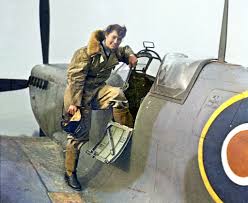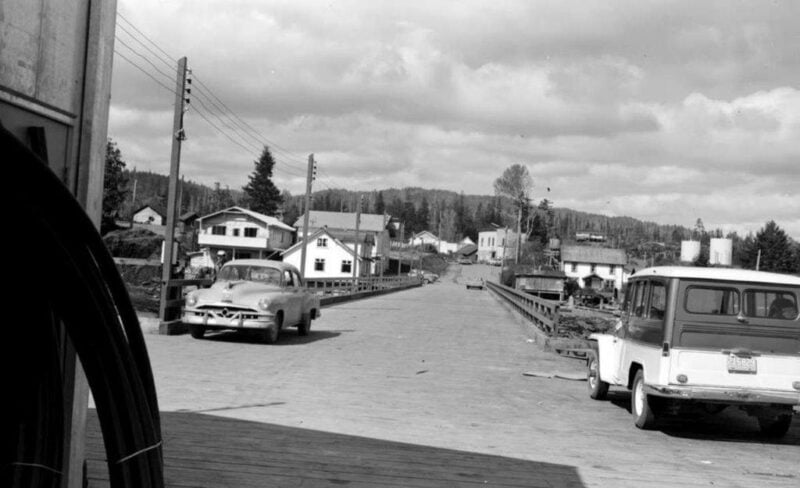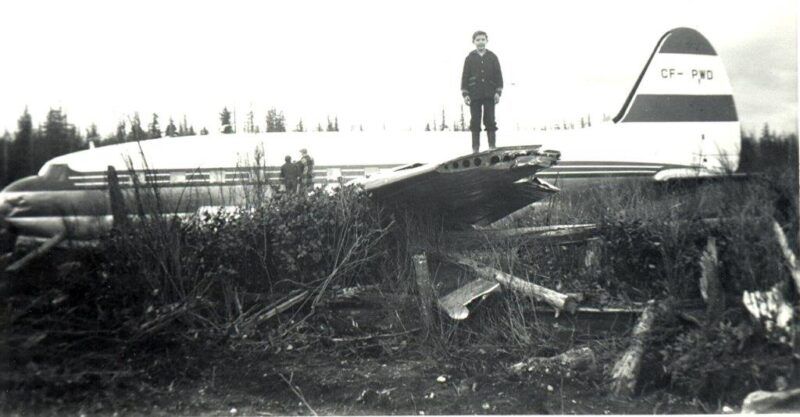#922 In the hot seat at Port Hardy
View from the Tower, Tin Pushers and Pilots on the BC Coast
by Grant B. Evans
Crofton: Osborne Bay Books, 2019; first published 2016
$19.95 / 9780994906571
Reviewed by Matthew Downey
*
 View from the Tower is about as rich and dramatic a memoir as one could reasonably expect to come from a former air traffic controller – “tin pusher” — stationed at Port Hardy at the northern end of Vancouver Island. In this second and revised edition of his book, Grant Evans provides some valuable insight into the process of postwar economic development through a personal account of life on the BC coast between 1960 and 1984. Though rather rough around the edges, View from the Tower is authoritative when it needs to be — while never losing a charm reminiscent of the sort of stories one might hear on a weeknight at a neighbourhood pub.
View from the Tower is about as rich and dramatic a memoir as one could reasonably expect to come from a former air traffic controller – “tin pusher” — stationed at Port Hardy at the northern end of Vancouver Island. In this second and revised edition of his book, Grant Evans provides some valuable insight into the process of postwar economic development through a personal account of life on the BC coast between 1960 and 1984. Though rather rough around the edges, View from the Tower is authoritative when it needs to be — while never losing a charm reminiscent of the sort of stories one might hear on a weeknight at a neighbourhood pub.

Evans recounts his time spent as a coastal air traffic controller, mostly in Port Hardy and Abbotsford. The perspective of an airport employee is well-suited to convey the transformation of northern Vancouver Island into its modern character. It was largely the RCAF wartime infrastructure that paved the way, sometimes literally, and made the north island more accessible before highway connection existed. Port Hardy’s airport started life in 1943 as RCAF Station Port Hardy, a Home War Operational Station. During the 1960s, the airplane was at the centre of the Canadian effort to connect with the wild BC coast; Evans describes that effort by reflecting both on the impressive features of industrial and technological advances as well as the tragedy of the ensuing natural devastation.
Evans’ intense fascination with the airplane and its roles in both war and peace is perhaps best conveyed by his many sketches in View from the Tower that illustrate the specific planes he knew so well, and which complement his extensive technical knowledge. Yet for every example of veneration of the air service industry there is one of commentary on the natural world or Indigenous culture, and how each has been affected. In particular, Evans puts great care in giving credit to the Indigenous groups of the north island and their respectful relationship with the land, which he contrasts with the ecological domination of coastal resources by Canadian industry (e.g. p. 38).

In addition to relishing much folksy wisdom, Evans’ anecdotes are often much more exciting than one might expect from the career of a small-town airport employee. Evans has encounters with important national figures from Prime Minister John Diefenbaker, about whom he does not hesitate to give his conflicted opinion (p. 18), to more local characters like long-time Nanaimo Mayor Frank Ney, a name also recognisable to those familiar with the Nanaimo Bathtub Race (p. 131). Through such anecdotes, Evans connects his story to wider perspectives of regional and national history.
Evans also takes care to connect his narrative to the important changes British Columbia underwent in the 1960s and 70s. His seemingly mundane but vital job as tin pusher gave him a clear view – and clear memories — of the dynamic industrial advances that surrounded him and that air traffic controllers were part of. View from the Tower is not simply the story of an air traffic controller and a description of his job experience, but a memoir of an observant witness of BC’s coastal economic development.

While numerous anecdotes fill out the short chapters and paint a vivid portrait of Evans’ work, the book’s organization proves somewhat perplexing at times. A certain chapter might have a title that sets out a singular topic, but turns out to contain several disconnected topics. For example, the chapter entitled “Part-Time Work” somewhat confusingly includes discussions of eagle culling and crab fishing (pp. 57-9). Such issues, along with minor grammatical hiccups, are hardly distracting and do not warrant much further criticism. Indeed for the most part Evans’ language, though colloquial, admirably captures both the natural and social surroundings of the north island in the rapidly changing postwar decades. I find this first-hand local view incredibly valuable. For instance, a fair proportion of the author’s older colleagues and compatriots were veterans of the RAF and RCAF — yet in its rush to postwar modernity and prosperity, Canada hardly resembled the country they had fought for.


View from the Tower will have a magnetic appeal to Vancouver Island locals and airplane connoisseurs, but it will also have a definite value to those interested in a human perspective of BC’s coastal postwar development. It contains much more than simply occupational details, and Evans’ experience as a tin pusher on the industrial frontier reveals how airlines opened up the coast to industry (logging, pulp production, mining) and civilian populations (company towns, sports and commercial fishing) within an air-defence infrastructure that had wartime origins. As an informal personal history of the regional development of coastal British Columbia through the eyes of the airline industry, Grant Evans’s book is undoubtedly a success.

*

Matthew Vernon Downey is an honours student of History and Political Science at the University of Victoria. He currently lives in Victoria. Previously he has reviewed books by Terry Reksten and Ken Mather for The Ormsby Review.
*
The Ormsby Review. More Books. More Reviews. More Often.
Publisher and Editor: Richard Mackie
The Ormsby Review is a journal service for in-depth coverage of B.C. books and authors. The Advisory Board consists of Jean Barman, Robin Fisher, Cole Harris, Wade Davis, Hugh Johnston, Patricia Roy, David Stouck, and Graeme Wynn. Scholarly Patron: SFU Graduate Liberal Studies. Honorary Patron: Yosef Wosk. Provincial Government Patron since September 2018: Creative BC
“Only connect.” – E.M. Forster
2 comments on “#922 In the hot seat at Port Hardy”